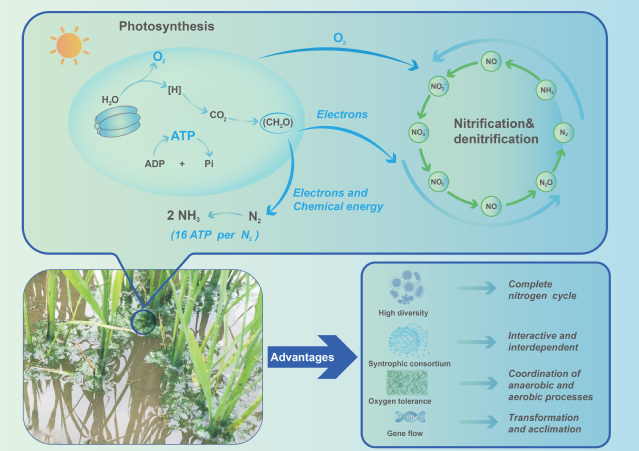
Highlights
Periphytic biofilms (PBs) are active microbial aggregates ubiquitously distributed in wetlands.
PBs form a stable and intricate food web catalyzing biogeochemical cycling of soil nitrogen.
PBs in rice paddies can improve nitrogen utilization efficiency by plants.
PBs-mediated microbial interactions facilitate the nitrogen cycle cooperation among microorganisms, while self-produced organics and genomic adaptation are beneficial for the nitrogen cycle regulation by PBs.
Abstract: Rice paddies are unique waterlogged wetlands artificially constructed for agricultural production. Periphytic biofilms (PBs) at the soil-water interface play an important role in rice paddies characterized by high nutrient input but low utilization efficiency. PBs are composed of microbial aggregates, including a wide variety of microorganisms (algae, bacteria, fungi, protozoa, and metazoa), extracellular polymeric substances and minerals (iron, aluminum, and calcium), which form an integrated food web and energy flux within a relatively stable micro-ecosystem. PBs are crucial to regulate and streamline the nitrogen cycle by neutralizing nitrogen losses and improving rice production since PBs can serve as both a sink by capturing surplus nitrogen and a source by slowly re-releasing this nitrogen for reutilization. Here the ecological advantages of PBs in regulating the nitrogen cycle in rice paddies are illustrated. We summarize the key functional importance of PBs, including the intricate and delicate community structure, microbial interactions among individual phylotypes, a wide diversity of self-produced organics, the active adaptation of PBs to constantly changing environments, and the intricate mechanisms by which PBs regulate the nitrogen cycle. We also identify the future challenges of microbial interspecific cooperation in PBs and their quantitative contributions to agricultural sustainability, optimizing nitrogen utilization and crop yields in rice paddies.
Keywords: Periphytic biofilms; Microbial aggregates; Regulation; Nitrogen cycle
DOI: 10.1016/j.eehl.2022.09.004